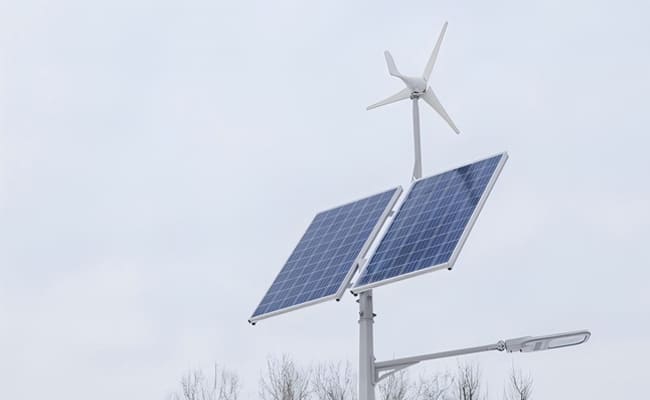What is a Residential Wind Generator?
A residential wind generator is a small wind turbine made for home use. It’s smaller than the big turbines used for commercial energy, so it can be installed on rooftops or in open areas around the house. These generators produce anywhere from a few hundred watts to a few kilowatts of electricity, enough to power things like lights, appliances in your home.
Can a Residential Wind Generator Power an Air Conditioner?
Air conditioners are high-energy-consuming appliances, often making up a significant portion of a household’s energy consumption. So, can a residential wind generator power an air conditioner? The answer is “possible, but several factors must be considered.”
1. Wind Speed and the Power Output of the Wind Generator
The power a residential wind generator produces depends on the wind speed. It only creates enough energy when the wind is strong. If the wind is weak, the generator won’t produce much power. So, whether a wind generator can run an air conditioner depends on how windy it is in your area.
For example, in windy places like coastal or mountain areas, your wind generator may provide enough power for an air conditioner. But in areas with unpredictable wind, even a good wind generator might struggle to supply steady power.
2. Energy Consumption of the Air Conditioner
Air conditioners use a lot of energy, especially when cooling or heating. A typical home air conditioner usually needs between 1,000 and 3,000 watts of power. Residential wind generators can produce power in this range, but since their output depends on wind speed, they may not always supply enough energy to run an air conditioner continuously, especially when the wind is weak.
For example, if a wind generator can produce a maximum of 2,000 watts, but the air conditioner needs 3,000 watts, the generator won’t be able to provide enough power, especially when the wind is low.
3. The Role of Battery Storage Systems
To address the variability of wind power, many homeowners pair their wind generators with battery storage systems. These systems store excess energy generated during periods of strong wind for use when wind speeds are low. This allows households to use the stored wind power even when the wind is not blowing strongly, improving energy utilization efficiency.
However, adding a battery storage system increases the initial investment cost. Therefore, it is essential to assess whether this is a worthwhile investment for your specific situation. If you live in an area with consistent wind resources, combining a residential wind generator with a battery storage system can make it more feasible to power an air conditioner.
Balancing Wind Power with Air Conditioner Demand
Although a residential wind generator may be able to provide power for an air conditioner in some cases, long-term power supply requires consideration of several factors:
- Wind Resources: In windy areas, your wind generator may produce enough power for your air conditioner.
- Energy Efficiency: An energy-efficient air conditioner uses less power, making it easier for the generator to keep up.
- Battery Storage: A battery storage system can store extra energy, allowing the air conditioner to run when the wind is low.
- Power Rating: Choose a wind generator with the right capacity to meet your home’s energy needs.
The Advantages of ELEGE Residential Wind Generators
When choosing a residential wind generator, ELEGE products are known for their efficiency and reliability. Designed with advanced technology and high-quality materials, ELEGE wind generators perform well even in low wind conditions. Many ELEGE models also come with smart control systems that automatically adjust the power output based on the wind, improving energy efficiency.

